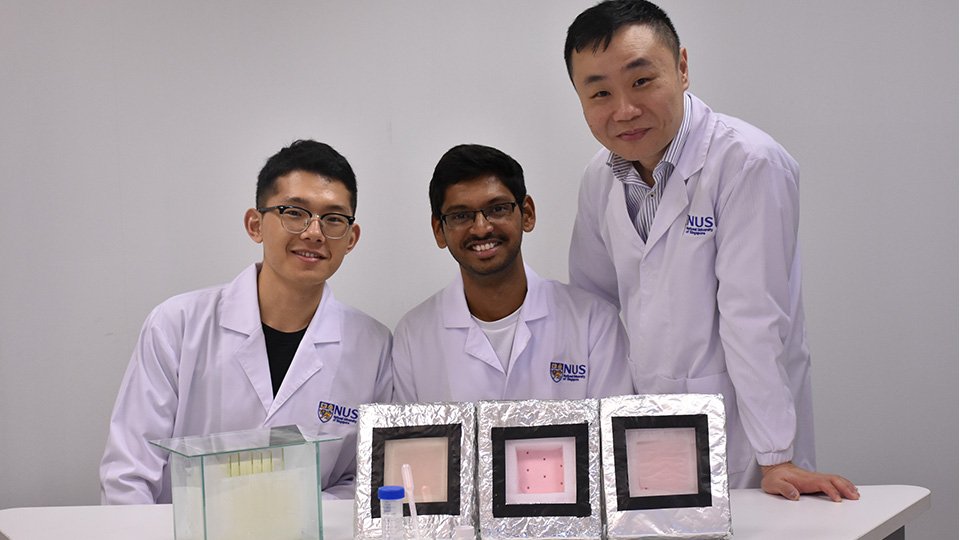
Image Courtesy: NUS Hydrogel Research Team
Singapore's NUS researchers found an innovative way to harvest water from the humid air above water surfaces such as reservoirs and the open sea each day.
Scientists have used unique zinc-based water-absorbing hydrogel developed by a research team from NUS Engineering. This gel-like material is over eight times more absorbent than commercial drying agents and only natural sunlight is required to harvest water from the water-saturated hydrogel.
Extracting water from Conventional drying agents like silica gel and calcium chloride agents would require energy-intensive processes and high temperatures, with limited yield, and hence this approach is not cost-effective.
The novel hydrogel efficiently absorbs water more than four times its original weight i.e, up to 14 times per kilogram of hydrogel used within a day. Hydrogel releases water at a relatively lower temperature of between 45 and 50 degrees Celsius, and thus water could be extracted in natural sunlight. The hydrogel maintains its absorption capability even after 1,000 absorption-desorption cycles. The salt content in the harvested water is found to be almost negligible.
“Due to the hot climate in Singapore, about 45 million cubic metres of water is lost from reservoirs through evaporation each year. The hydrogel can convert moisture present in humid air to water without the need for any external energy input. By harnessing the moisture-rich air that is commonly found above water surfaces, we can collect water, which would otherwise be lost to the environment” said research team leader Assistant Professor Tan Swee Ching, who is from NUS Materials Science and Engineering.
Floating water harvester
As a proof of concept, the research team first built floating devices each containing a small amount of hydrogel placed on a glass plate. These devices were left to float on the water at a beach. Periodically, the water-saturated hydrogels were retrieved and transferred to an enclosed glass box which was then exposed to natural sunlight. When exposed to heat, the temperature in the glass box would increase further, allowing moisture within the hydrogels to be released as vapors and later condensed on the walls of the glass box. Condensed water droplets in the glass box were then collected. The researchers are keen to work with commercial partners to bring this idea to market.
The findings of the study have been published online in the scientific journal Advanced Materials earlier this year.




